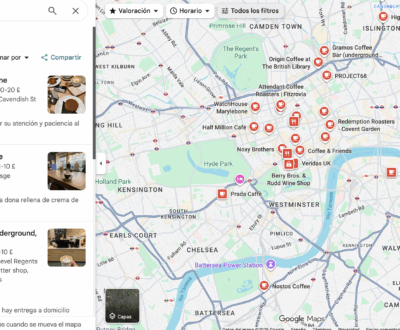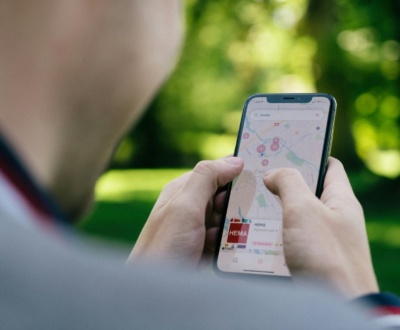How Does SEO Work? A Simple Explanation for Beginners
- May 12, 2025
- Latest Articles on SEO Trends and Tips
Search Engine Optimization (SEO) is the practice of improving a website so that it ranks higher in search engine results. In simple terms, SEO helps search engines understand your content and makes it easier for the right people to find your site through search. This is important because search engines like Google handle massive amounts of traffic every day. As one expert notes, “lots and lots of people search for things” on the internet, so SEO can drive high-intent traffic to your business. For example, a person searching for “buy blue widgets” already intends to purchase blue widgets – showing up in that search is far more effective than a broad ad campaign. In short, good SEO ensures your site appears when potential customers search for terms related to your products or services.
How Search Engines Find and Rank Pages
Search engines like Google use automated programs called crawlers to explore the web and build an index of pages. Google then ranks these pages based on relevance and quality. In general, the algorithm looks for relevant content (does the page answer the searcher’s query?) and high quality (is the page trusted by others). Relevance is determined by things like matching keywords and useful content, while quality is often judged by external signals such as backlinks from other reputable sites. In practice, this means pages with helpful, well-written content and strong links from other sites tend to rank higher. Google’s own guide emphasizes there are no secret tricks – the goal is simply to make it easy for engines to crawl and understand your content, and to build trust through good content and links.

SEO is often described as having three main pillars: Technical SEO, On-Page SEO, and Off-Page SEO. Each pillar focuses on different aspects of your site and marketing:
- Technical SEO deals with behind-the-scenes site infrastructure. This includes things like site speed, mobile-friendliness, and crawlability. In other words, it’s about making sure search engines can find and index your pages. For example, Google now uses mobile-first indexing, meaning it looks at your site’s mobile version when ranking pages. Ensuring your site is responsive and mobile-optimized is critical. Other technical factors include having a clear site structure and an XML sitemap so crawlers can easily navigate your site.
- On-Page SEO focuses on the content and HTML elements on each page. This means using relevant keywords in page titles, headings, and body text, and writing high-quality content that meets user intent. Important on-page elements include your page’s title tag, meta description, headings (H1, H2, etc.), and the actual written content and images. Google emphasizes “E‑A‑T” – Expertise, Authority, Trustworthiness – so demonstrating knowledge and trust in your content is key. For example, a blog post optimized for on-page SEO would naturally include the target keyword in its title and headings, explain a topic clearly, and use images with alt text. Many tools (like the Yoast SEO plugin) help writers check on-page factors as they write. If you’re unsure where to start, try our Free SEO analysis tool to get a quick evaluation of your on-page elements.
- Off-Page SEO involves actions outside your own website that build its credibility and authority. The most important off-page factor is backlink building – getting other reputable sites to link to yours. Each good backlink is like a vote of confidence in your content. For example, a backlink from a well-known site can greatly boost your site’s trust in Google’s eyes. Noble Desktop explains that off-page SEO covers “elements not on your site” – primarily backlinks and social media presence – that help build authority. In practice, off-page strategies include guest blogging, public relations, and social sharing. (As a real-world example, getting an industry blogger or news site to write about your product can give you a valuable link and visibility.)
Practical SEO Strategies
To improve your SEO, combine efforts across all three pillars. Here are some practical tactics:
- Technical SEO improvements:
- Site Speed: Compress images, use fast hosting and caching. Faster-loading pages rank better and keep users happy.
- Mobile-Friendly Design: Make sure your site is responsive. Since Google uses mobile-first indexing, a mobile-optimized site is essential.
- Site Structure & Sitemap: Organize pages into clear categories and use clean URLs. Create an XML sitemap and submit it to Google Search Console so crawlers can find all your content.
- Fix Errors: Use Google Search Console to detect crawl errors or broken links and fix them. A healthy site helps search engines crawl more efficiently.
- On-Page SEO practices:
- Keyword Usage: Do keyword research to find terms your audience uses (tools like Ahrefs or SEMrush are great for this). Include these keywords naturally in your titles, headings, and content. For example, if people search “easy pasta recipes,” include that phrase in your page title and content in a helpful way.
- Content Quality: Write clear, well-structured content that fully answers a user’s question. Aim for engaging, original text. Use subheadings, bullet points, and images to make it readable. Good content earns clicks and shares.
- Meta Tags and Alt Text: Craft a concise meta description (the snippet under your title in search results) that describes the page. Use alt text on images to describe them. These small bits of HTML help search engines understand your page details.
- On-Page Tools: If you use WordPress, plugins like Yoast SEO guide you to add meta tags and improve readability. They score your content on SEO factors as you write.
- Off-Page SEO activities:
- Backlink Building: Reach out to other sites in your industry for guest posts or collaborations. Create high-value content (like how-to guides or original research) that others want to link to. Remember, links from reputable, relevant sites (e.g. industry publications or major blogs) carry much more weight than random directories.
- Social and PR: Share your content on social media and encourage sharing. Engage with communities in your niche. While social signals are not a direct ranking factor, a strong online presence can lead to more links and traffic.
- Local & Reviews: If you’re a local business, get listed on directories and encourage customer reviews on Google My Business, Yelp, etc. Positive reviews and local citations help SEO for local searches (e.g. “restaurants near me”).
- Content and Keywords: Continually research new keywords and content ideas. Tools like Ahrefs or SEMrush let you find popular search terms and see what competitors rank for. For example, Ahrefs’ Site Explorer can analyze a competitor’s top pages and backlink profile, while its Keywords Explorer helps discover new keywords to target. SEMrush similarly offers keyword research and site audit tools.
SEO Tools and Measurement
Using the right SEO tools makes the optimization more effective:
- Google Search Console: A free tool from Google to monitor your site’s presence in search. It shows which queries bring users to your site (search analytics), how many impressions and clicks you get, and your average ranking position. You can submit sitemaps, check which pages are indexed, and get alerts about issues (like mobile usability or security problems). It’s essential for tracking how Google sees your site and fixing issues quickly. [Check out our article about Google Search Console to learn more.]
- Google Analytics: (Even though not listed, it’s commonly used) It shows detailed traffic stats – how many visitors come from organic search, which pages they visit, and how long they stay. This complements Search Console by showing user behavior after they land on your site.
- SEO Software: All-in-one platforms like Ahrefs and SEMrush provide many SEO features in one place. For example, Ahrefs lets you explore billions of keywords and check any site’s backlinks or content performance. SEMrush includes keyword research, competitor analysis, and site auditing tools. These tools help you find new keyword opportunities, audit technical issues, and spy on competitors’ strategies.
- Content Optimization: WordPress users often rely on Yoast SEO (and similar plugins) to optimize on-page elements. These tools give real-time feedback on keyword usage, readability, and meta tags, helping even beginners apply SEO best practices.
- Monitoring Rank and Performance: Use rank-tracking tools (built into many SEO platforms) to see where your pages rank for target keywords over time. This helps you measure the impact of your efforts.
Putting It All Together
A real-world SEO effort touches all three pillars. For instance, an online store might start by fixing technical issues flagged in Search Console (improving page speed and mobile view). Next, they would optimize each product page for the right keywords in titles and descriptions. Meanwhile, the marketing team reaches out to bloggers and news sites for reviews and mentions of their products (building backlinks). Over time, this combined strategy drives more traffic.
In summary, SEO works by aligning your website with what search engines and users want. Technical SEO makes your site crawlable and fast, on-page SEO makes your content relevant and helpful, and off-page SEO builds your site’s reputation on the broader web. By using the right tools (Google Search Console, Ahrefs, SEMrush, Yoast, etc.) and following best practices in each area, even beginners can steadily improve their site’s visibility and attract more of the right kind of visitors.
About us and this blog
We are a digital marketing company with a focus on helping our customers achieve great results across several key areas.
Request a free quote
We offer professional SEO services that help websites increase their organic search score drastically in order to compete for the highest rankings even when it comes to highly competitive keywords.
Subscribe to our newsletter!
More from our blog
See all postsRecent Posts
- Cracking the Spanish SEO Code: Insider Tactics for Explosive Online Growth October 27, 2025
- 10 Powerful Local SEO Tips to Rank Higher in 2026 October 24, 2025
- How to Optimize Your Google Business Profile for Local SEO October 24, 2025








